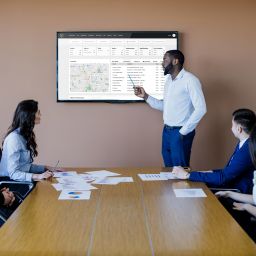What is Workforce Engagement Management (WEM)?
Workforce Engagement Management (WEM) is a collection of software solutions designed to make employees happy and productive. Contact centers are the primary users of the term. WEM emphasizes the human side of work, realizing that happy, engaged, and contented employees deliver better experiences for customers.
Customer experience (CX) is a prominent topic in the contact center business these days, and WEM software directly contributes to increasing CX.
WEM evolved from WFM and WFO
WFM is an abbreviation for Workforce Management. (See how that term is devoid of the word “engagement?”) This antiquated technique focuses on software that boosts call center productivity and production while paying little attention to how the agents feel about it. Call duration limitations are strictly enforced, breaks are monitored, and quotas reign supreme.
WFO, or Workforce Optimization, evolved from WFM. It retains much of the WFM idea but is more comprehensive. Quality assurance monitoring, customer feedback surveys, agent coaching, and learning tools are all part of WFO.
WFO gave birth to Workforce Engagement Management, which retains the hard measurements of WFM while expanding on and emphasising subjective components of the job, such as:
- Onboarding and recruitment
- Task management and assistance
- Reward and recognition
- The employee’s perspective
Workforce Engagement Management covers the full employee lifecycle
The primary belief at WEM is that a happy, engaged employee will:
- Remain with the center for a longer period of time, lowering turnover and hiring costs.
- Provide a better customer experience, which results in numerous benefits for the end-client (such as brand loyalty, customer retention, higher revenue)
- Be an advocate for the contact center to increase the likelihood that it will attract further talent.
WEM must span the entire employee lifecycle to guarantee that people feel engaged and fulfilled at work. A good Workforce Engagement Management (WEM) system will handle the following issues:
- Recruitment: Recruiting tools and techniques that not only attract talent but also accurately communicate job specifics.
- Onboarding: It is vital to get a new employee up to speed and feel welcome in their new position. Most businesses (let alone call centres) have inadequate or non-existent onboarding. This duty could be delegated to a segregated HR department or reduced to a few documents to read. WEM makes certain that this is a profound and meaningful experience.
- Coaching: Coaching, as opposed to training, is typically a more intimate and tailored encounter focused on navigating individual strengths and shortcomings. WFM training programmes prioritise quantity over quality. Coaching is the inverse.
- Task management: This element is the job—what the person was recruited to do. A WEM framework includes a smart system for creating, delivering, and completing tasks, as well as connecting it to all other necessary components.
- Goals and career development: Personal and departmental goals are influenced by business goals, coaching, and duties. Instead of a hazy idea, WEM simplifies these things into obvious channels.
- Reward and acknowledgement: Customer service can be a thankless career at times. Individuals who go above and beyond to achieve their goals or overcome adversity deserve to be recognized (and in some cases, an actual reward).
- Offboarding: When a contact center employee quits, it can be a great opportunity to learn from them and separate on good terms.
What to look for in a good Workforce Engagement Management platform
WEM is a collection of various pieces of software that communicate with one another. The best-in-class WEM suppliers offer an all-in-one solution, combining WEM with contact centre software (e.g. Genesys Cloud CX).
If you already have a Contact Center as a Service (CCaaS) provider and wish to add WEM capabilities, search for the following components:
- Quality control: The ability to record and analyse agent interactions across any channel. Monitoring used to be limited to audio only, but now includes speech-to-text screen recording and conversation transcripts.
- Coaching: A scheduling system for coaching appointments, as well as features to help both coaches and individuals being coached.
- Employee feedback systems: These are rich feedback systems that collect feedback from numerous channels, help employees communicate with one another, and assist leaders in translating it all into action.
- Gamification: This feature delivers quick and digestible feedback loops, usually in a visually appealing and story-bound manner (for example, rank up in your adventure!). The goal is to encourage advancement and success while providing critical metrics.
- Dashboards and analytics: Prebuilt and/or custom algorithms are fed data from all areas of the WEM. These consumable datasets can then be passed on to analysts for further analysis or delivered directly to decision-makers.
- Tools for team communication: This system should be able to “communicate” with the remainder of the WEM system and, preferably, the entire CCaaS suite. Integrations of this type significantly accelerate internal information sharing, eliminating the need for unsightly email chains and inefficient meetings.
- Tools for knowledge management and knowledge bases: A self-service procedure can solve several problems. A well-developed corporate knowledge base will not only document employee FAQs and common difficulties, but will also be able to accept and prioritise new issues (or update old ones with recent information).
- CX Insight: At the end of the agent contact, a good WEM should prioritise the data and insight linked to the consumer.
- Performance management: The fundamental WFM principles must still be documented. Call times, quotas, ratings, and so on should all be recorded and displayed in context with the rest of the job.

















